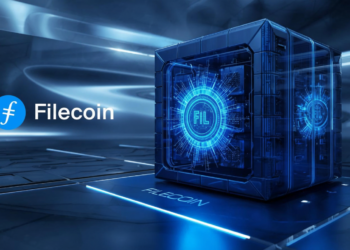Introduction
Blockchain networks like Ethereum are growing fast, but they face big hurdles. As more users and apps join, transactions slow down and fees jump. This congestion can hurt the whole system. To fix this, developers are working on ways to make Ethereum faster and cheaper.
Ethereum Plasma is one of these solutions. It helps increase transaction speed and cut costs while still keeping the network secure. For developers and investors, understanding Plasma is key to taking advantage of blockchain’s true potential. It offers a smart way to handle more transactions without risking user safety.
What Is Ethereum Plasma? An Overview of the Scalability Solution
Ethereum Plasma is a layer 2 scaling method built for Ethereum. It creates smaller, faster chains called “child chains” linked to the main Ethereum chain. These child chains process transactions separately but stay connected to the main network for security.
The goal of Plasma is to increase how many transactions Ethereum can handle daily. It does this without sacrificing safety. Plasma works alongside other solutions like sharding and rollups. Together, these methods form a broader plan to make Ethereum faster and more scalable.
By moving many transactions off the main chain, Plasma helps prevent network congestion. This allows more users and dApps to run smoothly without delays or high fees. Essentially, Plasma acts like a network of mini-blockchains within Ethereum.
Key Concepts Behind Ethereum Plasma
What Are Blockchain Child Chains?
Child chains, or “Plasma chains,” are smaller blockchains that operate under Ethereum’s larger network. They handle transactions independently, which speeds things up. Think of it like having multiple lanes on a highway instead of just one. Vehicle traffic flows more smoothly because cars are split into separate lanes.
Developers use child chains for specific purposes, such as gaming or microtransactions. When many users do small, quick trades, these chains help reduce the load on the main Ethereum network. By dividing work, Plasma makes the entire system more efficient.
The Root Chain and Its Role
The main Ethereum chain, called the “root chain,” acts as the hub for all the child chains. It manages security, controls the creation of new child chains, and verifies final transactions. When a child chain processes many transactions, it reports summary data back to the root chain.
This setup keeps the overall system safe. The root chain can challenge or verify transactions from child chains and catch any fraud. It’s like a central authority overseeing smaller, faster networks. This connection ensures that even if child chains operate separately, they remain part of a secure system.
State Channels and Smart Contracts in Plasma
State channels are like private paths for users to exchange assets quickly. They let parties send off-chain updates without bothering the main network each time. Once they finish, the final state is submitted to the Plasma chain.
Smart contracts are self-executing code tied to Plasma. They automate rules for transactions and dispute handling. This automation keeps processes clear and safe. If someone tries cheating, smart contracts help detect and resolve issues fast.
Together, state channels and smart contracts improve speed and security for Plasma chains. They make it possible to process many transactions quickly while staying protected against fraud.
How Ethereum Plasma Works
Creating and Managing Plasma Chains
To set up a Plasma chain, users deposit assets into the main Ethereum network. This locks funds into a special contract. Then, a new child chain is created for handling transactions off-chain.
As users perform transactions on the child chain, the system creates small batch updates. Periodically, the chain submits a summary of these transactions to the main Ethereum chain. This process keeps everything anchored to the main network’s security.
When the user wants to withdraw their assets, they go through a formal exit process. They submit proof of their transaction history on the child chain, which the root chain verifies before releasing the funds. This setup makes sure assets can safely move between chains without risk of fraud.
Transaction Processing and Security
Most transactions happen off the main chain on child chains. They’re faster because they don’t require full network verification for each move. Instead, transactions are validated on the child chain first.
Security is built-in through fraud proofs. If someone tries cheating, other participants can submit evidence to challenge the invalid transaction. The root chain reviews these proofs and can reject fraudulent activity. If fraud is confirmed, it can even deactivate the dishonest chain.
Periodic Commitments and Fraud Prevention
Child chains regularly submit “commitments” — summaries of recent transactions — to the Ethereum mainnet. These commitments allow the network to monitor what’s happening on each chain. If someone tries to cheat, others can flag it using these summaries.
The process of “exiting” is crucial. Users start a withdrawal by submitting proof to the root chain. If the proof shows fraud or invalid transactions, the exit is blocked. This ensures that all assets stay safe and trustworthy.
Challenges in Implementation
Building and managing Plasma chains isn’t simple. Developers face hurdles like technical complexity and ensuring seamless user experiences. Exit delays can bother users, especially when recovering assets.
Security remains a concern, too — some attack vectors might include exit scams or malicious validators. Adoption is another challenge; many existing tools and platforms aren’t ready to use Plasma chains yet. Overcoming these obstacles takes time but is essential for scaling Ethereum efficiently.
Advantages of Using Ethereum Plasma
Scalability and Transaction Throughput
Plasma can boost transaction speeds significantly. While Ethereum natively processes about 15-30 TPS (transactions per second), Plasma can push this number much higher—potentially thousands of TPS.
This increase allows for smoother experiences in dApps, faster payments, and better gaming environments. For example, some early implementations report handling hundreds of thousands of transactions daily without clogging the main network.
Cost Reduction
Offloading work to child chains lowers transaction fees sharply. Instead of paying high gas fees on Ethereum’s mainnet, users can transact cheaply within a Plasma chain. This makes microtransactions and small payments feasible, opening new possibilities for developers and consumers alike.
Enhanced Security Features
Despite operating off-chain, Plasma maintains security through fraud proofs and challenge mechanisms. If someone cheats, validators can challenge their moves on the root chain. This oversight keeps transactions honest and assets secure.
Smart contract-based exit protocols add a layer of protection, ensuring users can always withdraw their funds safely.
Flexibility and Customization
Developers can design Plasma chains tailored to specific use cases. For instance, a chain could focus on gaming, while another handles micropayments. This customization makes Plasma highly adaptable. It helps avoid one-size-fits-all solutions and encourages innovation.
Limitations and Challenges of Ethereum Plasma
Complexity in Implementation
Setting up Plasma chains takes technical skill. Managing exit protocols and fraud proofs requires careful coding and testing. These complexities could slow down broad adoption.
User Experience Concerns
Exit times and withdrawal delays can frustrate users. Waiting days for assets to be safely withdrawn hampers real-time use. Improving these processes is vital for user satisfaction.
Security Risks
While Plasma aims for safety, vulnerabilities exist. Exit scams or malicious validators could threaten assets if not properly managed. Continuous security updates are necessary to prevent exploits.
Compatibility and Adoption Barriers
Integrating Plasma with existing platforms poses hurdles. Not all dApps are ready to support off-chain transactions. Convincing users and developers to adopt new workflows can take time.
The Future of Ethereum Plasma and Its Role in Blockchain Scalability
Plasma’s development continues rapidly. Several projects have launched experimental chains and protocols. Some consider Plasma as part of Ethereum’s future, especially alongside upcoming sharding updates.
Experts believe Plasma can expand Ethereum’s capacity by orders of magnitude. Combining it with rollups and other layer 2 methods will create a more scalable and user-friendly blockchain. Innovation in this area keeps the promise of fast, cheap, and secure transactions alive.
Looking ahead, Plasma is likely to evolve and integrate with other solutions. Developers aim to make it easier, safer, and more versatile. The goal remains clear: facilitate mass adoption while ensuring bottom-line security.
Key Takeaways
- Ethereum Plasma creates smaller chains to boost speed and lower costs.
- It keeps security through fraud proofs and root chain validation.
- Designed for quick transactions, especially useful in gaming, micro-payments, and dApps.
- Challenges include complex setup, exit delays, and securing user funds.
- Future developments will likely see Plasma combined with other scaling tech.
- Staying informed about Plasma’s progress can lead to smarter investments and better development strategies.
References and Further Reading
- Ethereum Foundation’s official documentation on Plasma
- Whitepaper on Plasma architecture
- Industry reports on blockchain scalability solutions
Harnessing the power of Ethereum Plasma can transform how we handle blockchain transactions — faster, cheaper, and safer than ever before. Keep an eye on this technology for the future of decentralized apps.

























